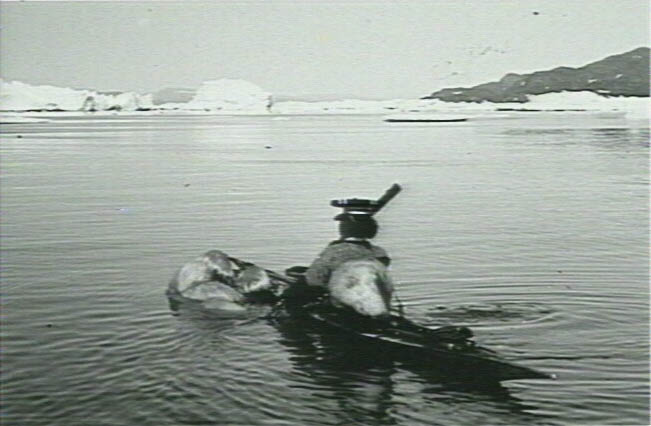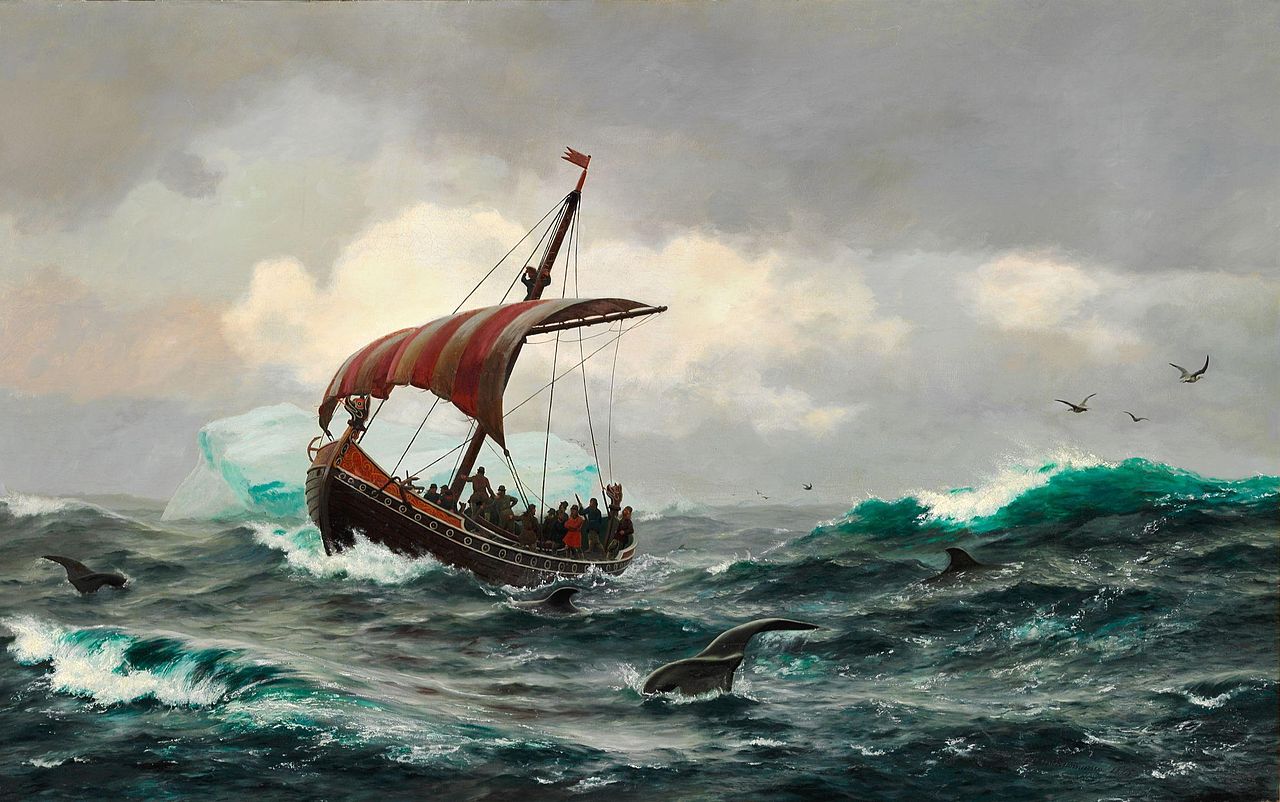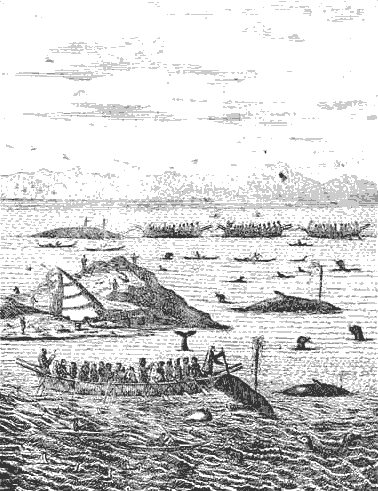The history of Greenland remains more or less the same. It is basically the history of life under extreme arctic conditions. An ice sheet, restricting human activity, covers more than 80% of the island. According to historians, the first people to inhabit Greenland arrived from North America.
Later, researchers also found out that Icelandic Vikings settled on its southwestern coast, which might have been uninhabited before their arrival. Greenland is both a fascinating and mysterious place to be. Unlike other places in the world, Greenland is a conversation starter, and therefore, it is only right that we keep it going.
Early Paleo-Eskimo culture
According to the early history of Greenland, the Paleo-Eskimo had migrated from the islands North of the North American mainland. Considering the weather conditions of Greenland, survival was very difficult. As time passed, one generation passed away while the next took its place. Even today, archeology can only provide approximate dates of the cultures that flourished in Greenland before the 10th century Norse exploration.
Amongst the earliest cultures known to exist in Greenland include the Saqqaq culture and the Independence I culture in northern Greenland. Historians believe that the followers of these cultures belonged to two different groups that arrived from northern Canada to Greenland.
Around 800 B.C. the Independence II Culture popped up exactly where the previous Independence Culture existed. However, initially, it was thought that the Dorset Culture promoted Independence II culture. According to recent studies, researchers state that the Dorset Culture should be understood as the continuation of the Independence II culture.
Norse Settlement
The ancient history of Greenland states that the Europeans might have discovered Greenland in the early 10th century after Gunnbjorn Ulfsson’s ship was blown off course while sailing from Norway. Additionally, explorers like Erik the Red set out from Iceland and reached the southwest coast of Greenland. Upon finding the region uninhabited, they decided to settle there. It was Erik who named the Island, Greenland.
According to the sagas, Erik had exiled Erik the Red for three years for committing a murder. He then, sailed to Greenland, discovered and explored the coastline while claiming certain regions as his own. He then returned to Greenland and requested people to help him establish a settlement in Greenland.
While the Norse arrived in Greenland, they settled along Greenland’s south-western fjords in three separate locations. The larger Eastern Settlement, the smaller Western Settlement, and the still smaller Middle Settlement.
The Norse Settlement’s economy featured a combination of fishing, hunting while farmers kept goats and sheep for grazing. These were brought into Greenland for cheese, milk, and butter. However, most of the consumed meat came from hunted caribou and seals. The Norse Settlement was thriving and doing well until it came to a decline in the 14th century.
Around 1350, the Norse had abandoned the Western Settlement. In 1379, the Inuit attacked the Eastern Settlement and killed 18 men, and captured two boys and a woman. Then, the Black Death in 1402-104 hit Iceland for the first time and washed away more than half the population there. However, there is no evidence suggesting that it ever reached Greenland.
Norse Failure
When it comes to discussing the Norse Failure, there are several theories suggesting how the Norse settlements in Greenland collapsed after surviving for some 450-500 years. Some of the primary factors highlighted include conflicts with Inuit people, gradual climate change, and loss of contact and support from Europe.
Numerous studies have tested these hypotheses and several have led to significant discoveries. In “The Frozen Echo”, Kristen Seaver argues the generally accepted theories and hypotheses about the demise of Greenland and asserts that the colony towards the end was healthier than ever.
Additionally, she also states that the Greenlanders could not have starved to death but rather been wiped out by Inuit or unrecorded European attacks. However, the archeological evidence recovered from the farm sites suggests the possibility of an attack.
On the other hand, Greenland was always colder in winter than Norway and Iceland. This made its terrain less hospitable to agriculture. Soil erosion was a danger from the beginning but the Greenland settlements only realized it until it was too late.
It is said that the Norse never learned the Kayak navigation of ring seal hunting. On the other hand, the Inuit by 1300 had pioneered the art of hunting and may have hunted the Norse Livestock. As a result, the Norse must have been forced to abandon their settlements or come into conflict with the Inuit.
One intriguing fact relating to a brief history of Greenland and Norse settlements is that neither the Danish and Norwegian nor Icelandic’s public functionaries were aware of the fact that Norse Greenland had existed.
And while the Norse settled, they were either attacked by the Inuit or raided by the Europeans, ultimately resulting in destroying their settlements. This forced the Norse to sail away South while Inuit managed to take in some remaining women and children before the final attack.
Late Dorset and Thule cultures
The history of Greenland states that the Late Dorset culture arrived in Greenland in the early 14th century. This culture existed in the northwest of Greenland, far from the Norse settlement on the southern coasts. Archeological evidence suggests that this culture continued the culture of Norse or Thule settlements.
The evidence also suggests that there were gathering sites for around four to thirty families living and having settled together for a short period of time during their movement cycle.
Around AD 1300-1400, the Northeast areas of Greenland were inhabited by Thule arriving from the West. These people, were the ancestors of the modern Greenland Inuit and were flexible and engaged in hunting animals of all kinds both on land and in water.
In addition to that, according to researchers, the Thule adapted well to the Greenland environment as the archeological evidence suggests that they were not using all parts of hunting skills and therefore, wasting more resources due to either surplus or well-adapted behaviors.
Strategic Importance
The year 1905 saw Norway regaining full Independence. However, they argue that the Danish claims of Greenland were invalid since it was the possession of the Norwegians before 1815 and in 1931. Additionally, the Norwegian meteorologist Hallvard Devold occupied uninhabited Eastern Greenland on his own initiative.
At the same time, the Norwegian government had supported the claiming of the Erik the Red’s Land. Two years later, the Permanent Court of International Justice ruled in favor of Denmark.
World War II
During World War II, Nazi Germany had extended its war operations to Greenland. At the time, Henrik Kauffmann, the Danish Minister to the United States, who already had refused to sign a treaty to recognize the German occupation of Greenland, signed a treaty with the United States on April 9, 1941, to establish stations in Greenland.
However, Kauffmann did this without notifying the Danish government, which blamed Kauffman for high treason, fired him, and told him to return immediately.
Cold War
Greenland held strategic importance during the Cold War. The United States had offered Denmark $100,000,000 but the country refused to sell it. In 1951, the Kauffmann treaty was replaced by another. The Thule Air Base was made permanent in the northwest.
Two years later, in 1953, some Inuit families were told to move their homes to make way for the extension of the base. This reason alone created a bit of friction between the Danish government and the Greenlandic people.
Final Word
Researchers and historians continue to study the history of Greenland. Considering the discoveries of the Greenland mummies recently have motivated the relevant individuals and authorities to dig deep into the matter. Today much is known about Greenland than it ever was. The Thule and Norse settlements have played a huge role in highlighting cultures and the way of living at the time. Only time can tell if Greenland has even more secrets to share.




